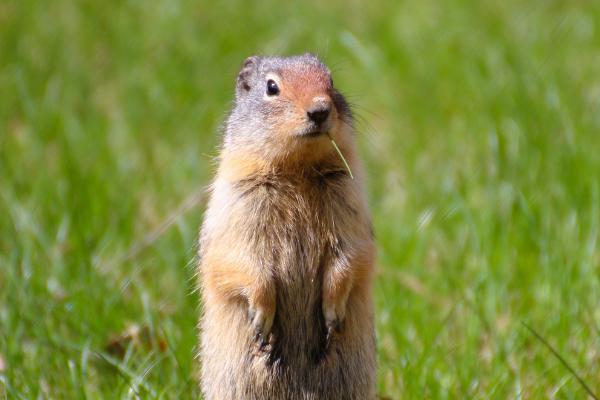Call it the ultimate underdog, a critically endangered, native keystone species that Friends of Animals Wildlife Law Program has been fighting to protect for years, and in so doing, winning battles that will help save other endangered species as well.
In a recent development, the State of Utah sought to file an amicus brief in a Friends of Animals’ lawsuit against the U.S. Fish and Wildlife Service regarding the permits it approved allowing developers to destroy habitat of threatened Utah prairie dogs. Friends of Animals, which seeks to end the permits and the killing of Utah prairie dogs, opposed the State’s motion as untimely, prejudicial, and irrelevant. On Sept. 28, the Court agreed, finding that “the strength and usefulness of the information provided in the States Amici’s proposed amicus brief is lacking.” It also found that the State’s motion was untimely and prejudicial. Thus, the Court denied the State’s request to file an amicus brief.
“We are happy with the Court’s ruling and glad that the Court can proceed with case,” said Jennifer Best, assistant legal director for Friends of Animals Wildlife Law Program. “The Utah prairie dog population has been in a downward trajectory since the U.S. Fish and Wildlife Service issued the challenged plan and permits. Friends of Animals’ case is critical to reverse this trend and support the survival and recovery of these complex and important creatures.”
The Utah prairie dog is the smallest type of prairie dog, a highly intelligent, highly social member of the squirrel family that lives only on the sagebrush steppes of southwestern Utah. The state’s unique prairie dog colonies began to decline when eradication efforts by farmers and ranchers ramped up a century ago, and by the 1960s populations crashed because of poisoning, nonnative plague disease and habitat destruction.
By the early 1970s, the Utah prairie dog had been eliminated from major portions of its historical range and had declined to an estimated 3,300 individuals distributed among just 37 colonies, says the FWS, the federal agency charged with protecting the species. The Utah prairie dog was listed as endangered on June 4, 1973.
By the 1980s, Utah prairie dog populations had rebounded enough for the FWS to reclassify them from endangered to merely threatened and to permit up to 6,000 animals to be killed a year if they could be shown to cause damage to irrigated agriculture or pasture lands. Efforts also began to relocate colonies from private property – where 70 percent of the prairie dog population now occurs – to areas on public lands where the prairie dogs once lived.
FoA’s legal team first stepped in on behalf of the Utah prairie dog in 2013, challenging a group representing property owners in Cedar City that claimed protecting the prairie dog under the Endangered Species Act infringed on their constitutional rights. The group, People for the Ethical Treatment of Property Owners (PETPO), argued that because the Utah prairie dog species lived only in Utah, federal laws did not apply.
After a state district court decision gave the state of Utah the right to override federal ESA protections, in 2017 FoA’s Wildlife Law Program successfully argued in defense of both the Endangered Species Act and the embattled Utah prairie dog.
Friends of Animals once again came to the Utah prairie dog’s defense when the FWS devised a new plan that authorized the removal and killing of Utah prairie dogs across the entire range of their habitat and allowed developers to translocate the dogs only when deemed feasible.
FoA challenged the agency’s April 2018 decision, which could have led to the killing or removal of more than 7,000 prairie dogs over a 10-year period, plus an additional 15,000 independent of development, totaling more than a quarter of the entire population. Ninety percent of prairie dogs do not survive past their first year in a new location and two-thirds of new sites fail completely.
Friends of Animals is still waiting for the Court to issue a final decision on the lawfulness of the plan and permits that authorize the destruction of Utah prairie dog habitat and the killing of up to 7,152 prairie dogs.
The five species of prairie dogs play a significant role in the biological diversity of North American ecosystems. More than 100 other native species benefit directly from prairie dog habitats, including bison, antelope, mice, burrowing owls and predators such as golden eagles, rattlesnakes, bobcats, badgers, coyotes, foxes and ferrets.
“Our modest win in the ongoing battle to protect this one species is an important reminder in light of the recent news that nearly two dozen animal and plant species are now to be declared officially extinct. Like the Utah prairie dog, most of these now-gone species lived in small, fragmented communities, and all perished because of human-caused harm. That’s why we fight to save the Utah prairie dog, because when they win, all endangered species win,” said Priscilla Feral, president of Friends of Animals.

